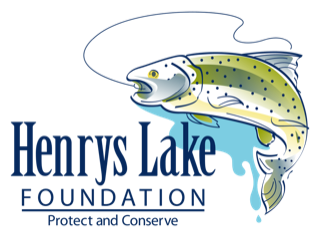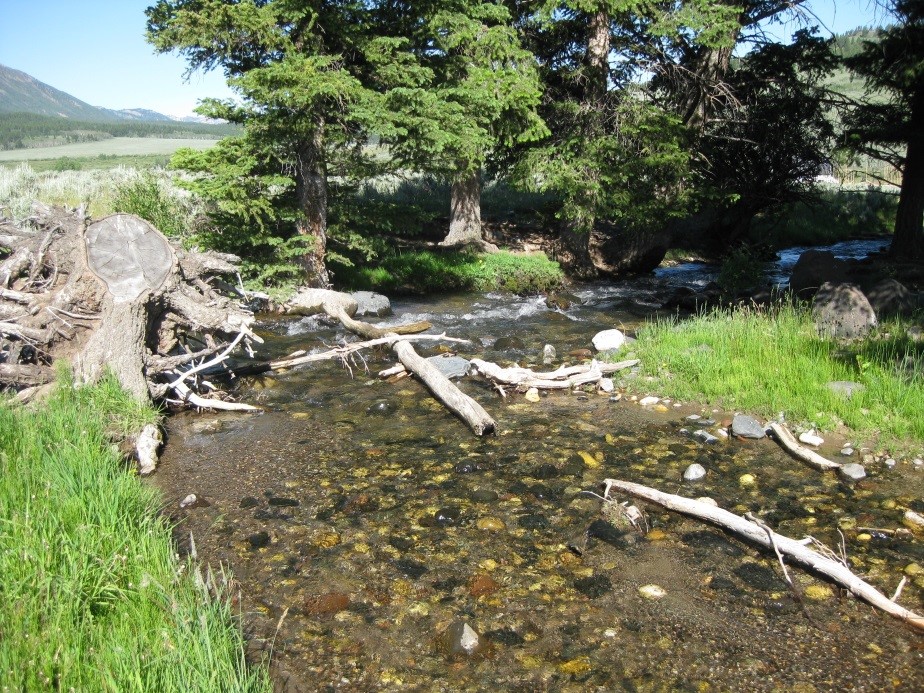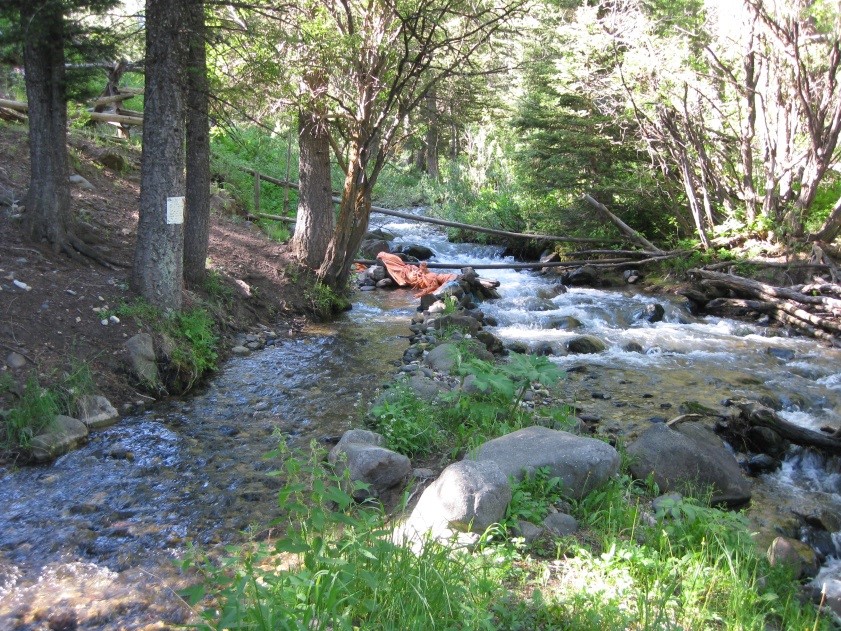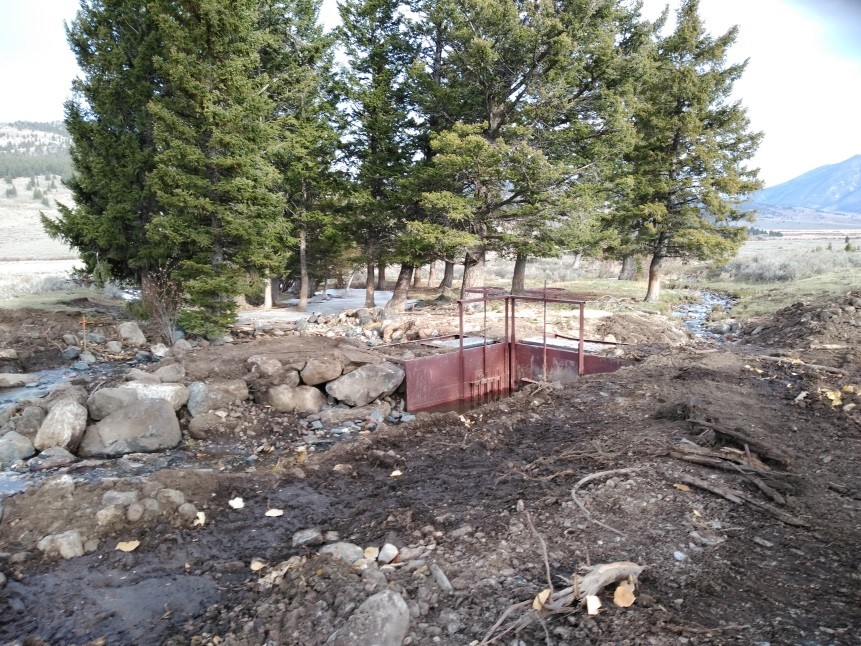
For more 2019 Project details, read our 2019 HLF Newsletter
Henrys Lake Tributary Diversion Project
Most Henrys Lake anglers know that fishing success near Duck Creek is dependent on summer flows. During drought years, little water flows to the mouth and fish don’t congregate.
Likewise, spawning and rearing habitat in this vital Henrys tributary is minimal during poor water years. Side channels dry up and stream temperatures increase, making it unsuitable for fingerling rearing.
Simply stated, increase flows in Duck Creek and you increase fishing opportunity and improve habitat for Yellowstone cutthroat trout.
In 2015, the Henrys Lake Technical Committee formed to identify and prioritize fish habitat projects on Henrys Lake. The group identified the Duck Creek drainage as the number one priority. A project on Rock Creek (the largest tributary to Duck Creek) installing diversion control structures would increase flows by diverting water during periods when landowner irrigation was unnecessary.
In the winter of 2018, the Idaho Department of Fish and Game Regional Fisheries Manager-Brett High, coordinated efforts with the USFS, the Henrys Lake Foundation, and local landowners to initiate the project. Landowners Mike Moedl and Lynn Briggs had approved the project. Fabrication for the metal structures began under the supervision of USFS employees Lee Mabey and Louis Wasniewski. Construction site work was provided by Darin Schneider from IDFG. Project funding was provided by the Henrys Lake Foundation and grants.
In October 2019 the diversion structures were installed. In the spring of 2020 flumes will be added to monitor flows and reduce erosion.
Sawtell Peak and the Centennial mountains maintain winter snows well into late summer. From these snowy fields, Rock Creek flows. Thanks to this collaborative effort and dedicated landowners, water flowing from this tributary will now contribute to Duck Creek. Fish habitat will be improved and anglers will benefit. For over three decades, fish habitat improvement projects have been implemented on Henrys Lake. The Henrys Lake Foundation has provided funding, technical expertise, collaboration skills and labor to most of these projects. We are pleased to see our members’ contributions go towards projects that benefit fish habitat and angler opportunity.
Henrys Lake Foundation Funds Continuing Research
University of Idaho graduate student Darcy McCarrick has been studying factors influencing YCT populations in Henrys Lake utilizing radio telemetry transmitters. Last year Darcy tagged 50 YCT and 50 Utah Chub and studied their movement with fixed telemetry receivers placed in tributaries and with mobile tracking from a boat.
The purpose of this study is to determine the extent YCT populations are influenced by Utah Chub, and whether competition for food, prey resources, or space (thermal refuge) are playing a role. The study objective is to study movement and habitat use in the lake by both species. Results will identify possible interactions and provide insight that can be useful in the management of the fishery.
Because of the small sampling size, Darcy requested funding to extend the study to another year with deployment of an additional 50 tags for each species. Henrys Lake Foundation Board approved $5000 for expenses on this project, to supplement additional funding provided by Idaho Department of Fish and Game. We look forward to having more information on the results of this ongoing study.
In addition to the above projects, HLF continues to look for opportunities to improve riparian corridors along tributaries to improve water quality to the lake. This includes cattle fencing which includes fencing off the creeks and shoreline, providing watering gaps for cattle, hardening the crossings to reduce siltation, and maintaining continuity of fence lines. Several priority areas were identified for 2020. HLF is also continuing to look at tributary habitats in the south and west sides for potential improvements. Although no specific projects have been identified, the HL Project Team continues to discuss opportunities for future work.



